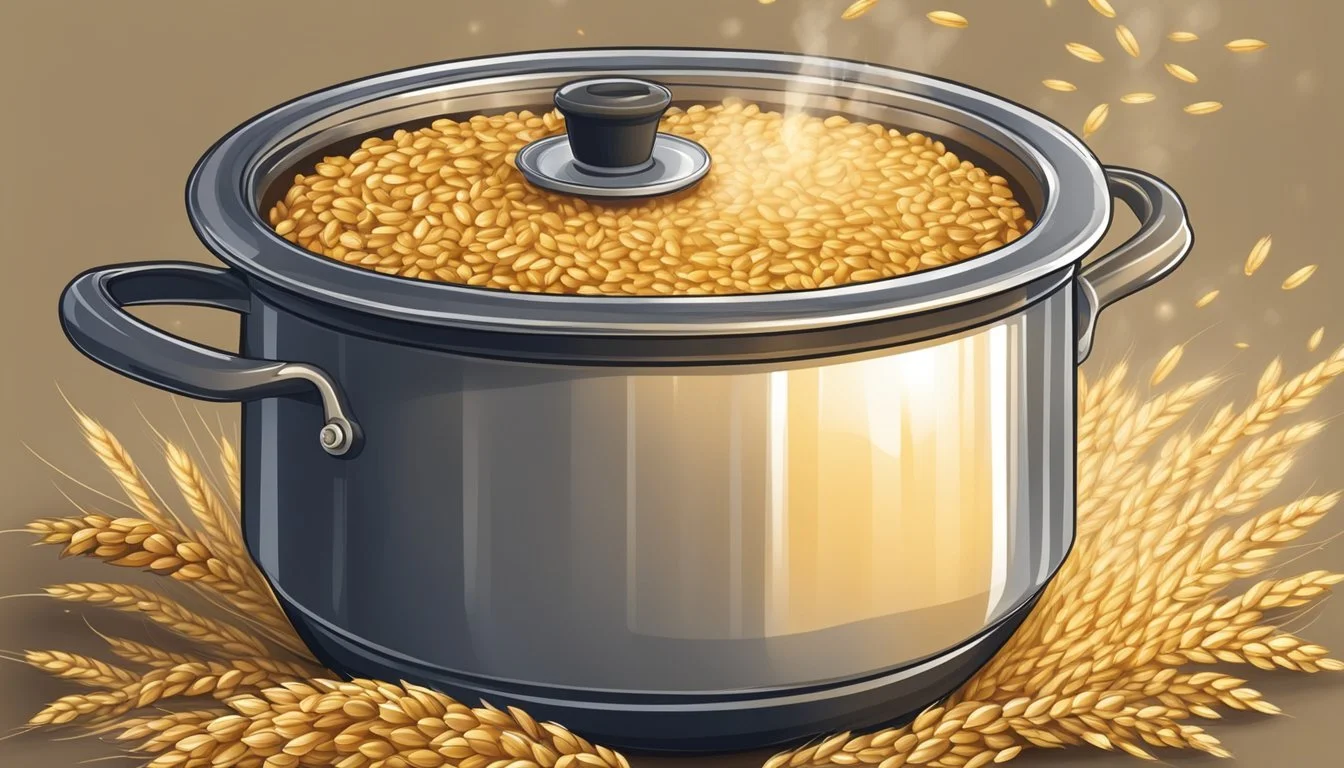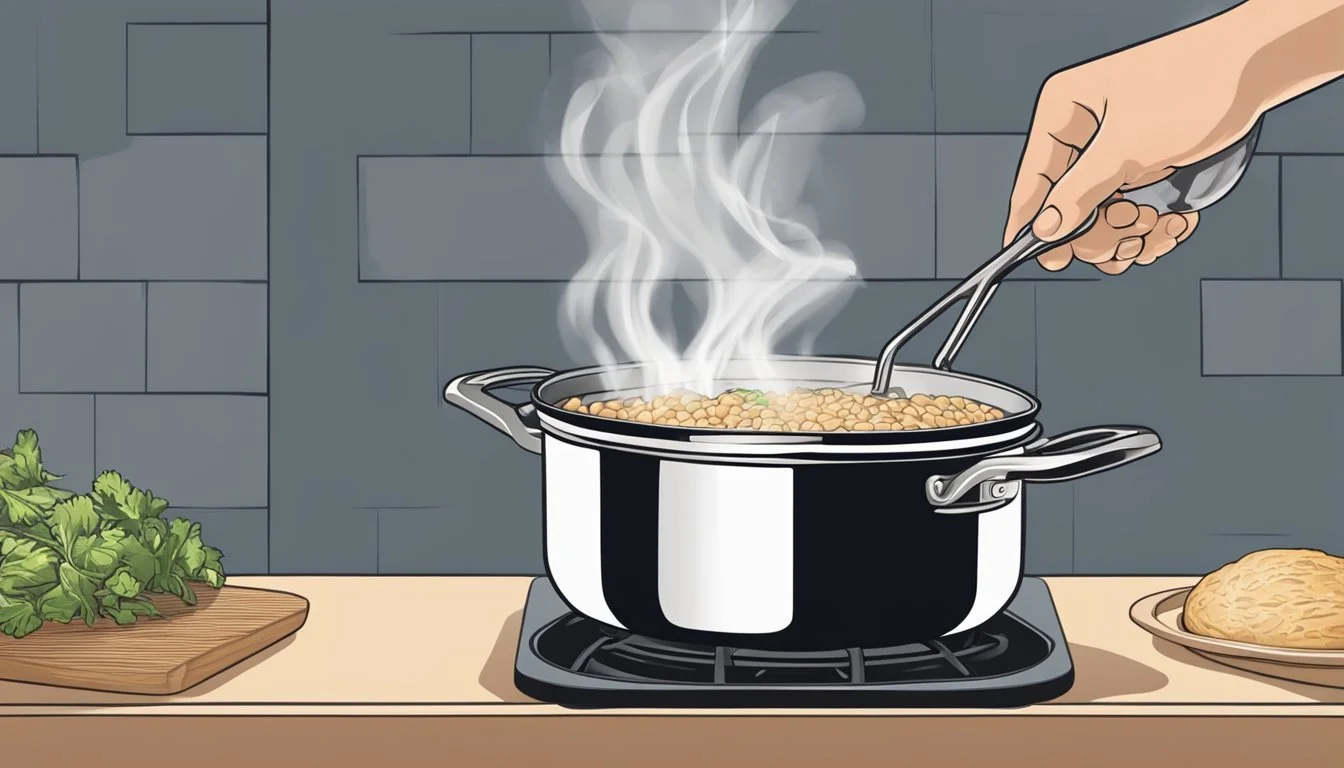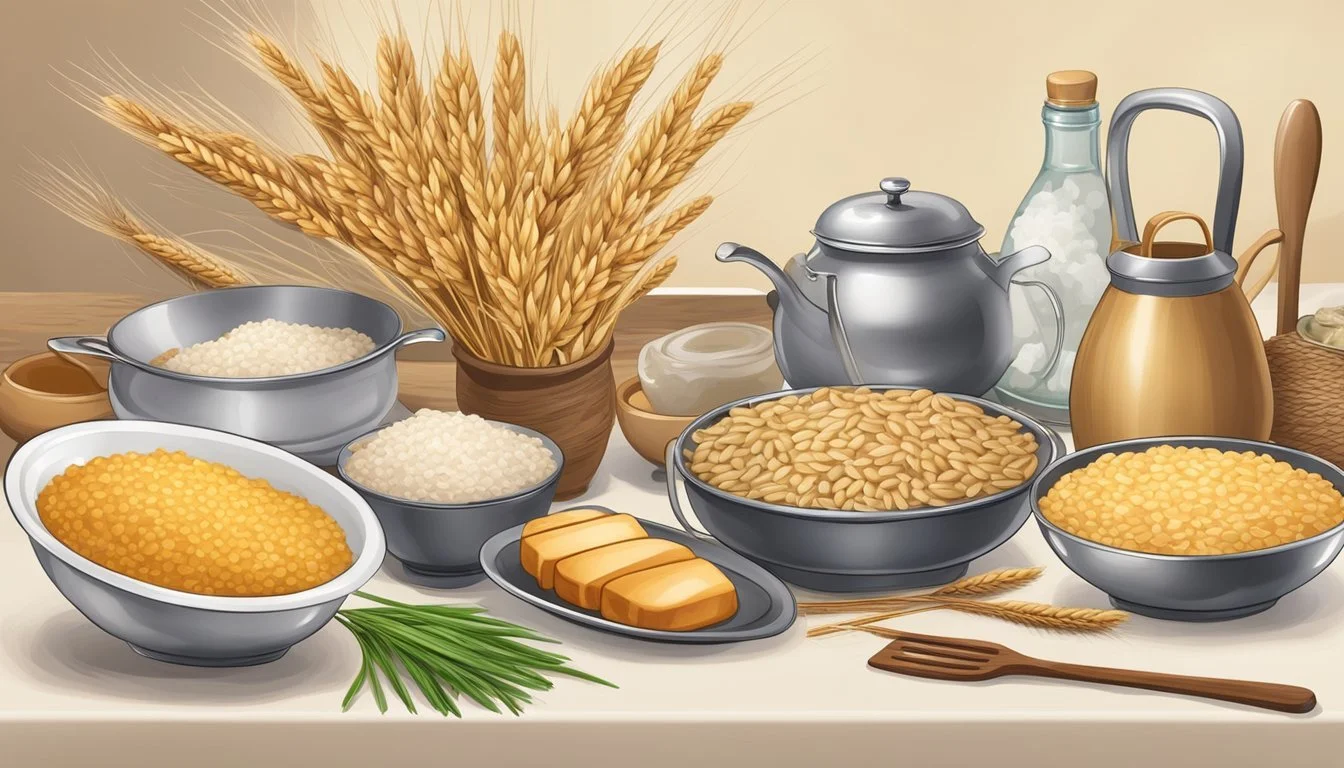Saving Overcooked Kamut
Tips for Revitalizing Your Ancient Grain Dish
Kamut, known scientifically as Khorasan wheat, holds a place of prestige among ancient grains for its nutritional benefits and distinctive buttery flavor. Recognized for its larger size when compared to common wheat, Kamut offers a unique option for those looking to diversify their whole grain intake. As an ancient grain, it has maintained a largely unaltered genetic profile, boasting a richer array of nutrients, such as proteins and essential amino acids which support muscle repair and body function. Its resurgence in modern diets comes as a response to the demand for more wholesome and nutritious food options, serving as a testament to its enduring legacy and benefits.
Preparing Kamut can sometimes lead to challenges, notably the risk of overcooking which can turn the grain from tender to mushy. However, with the appropriate techniques, there is a multitude of ways to salvage overcooked Kamut, ensuring that the nutritional value is retained, and the palatability is restored. One of the key strategies is incorporating it into dishes where a softer texture complements the overall meal, such as in hearty soups or warm, comforting pilafs that embrace its nutty undertones.
It is essential to consider that, while Kamut is a wholesome alternative to modern wheat varieties, it contains gluten and is unsuitable for individuals with celiac disease or gluten intolerance. Yet, for those without these concerns, enriching a diet with Kamut can contribute to a balanced, nutrient-rich eating pattern. When faced with overcooked Kamut, creative culinary approaches allow for it to be transformed into delicious and satisfying dishes that highlight the grain's enduring appeal.
What Is Kamut?
Kamut is a brand name for Khorasan wheat, an ancient grain known for its rich nutritional content and buttery flavor. This section delves into its history, distinct characteristics, nutritional advantages, and culinary applications, offering insights into why this grain is revered in modern cooking.
History and Origins
Kamut traces its roots back to ancient times, specifically to the traditional agricultural practices of Egypt and Mesopotamia. The term "Khorasan" refers to a historical region that spanned parts of today's Iran. Legends suggest that Kamut grains were found in an Egyptian tomb and later cultivated in Montana, bringing ancient heritage to new world agriculture.
Kamut Characteristics
Kamut grains stand out with their large, plump kernels, exhibiting a golden hue that makes them visually distinctive. They possess a nutty flavor and slightly chewy texture, which can enrich a variety of dishes. Although Kamut contains gluten, it is sometimes preferred by those seeking alternative wheat options, provided they do not suffer from celiac disease.
Nutritional Profile
Boasting a higher protein content than modern wheat, Kamut contributes to a nourishing diet.
Nutrients Amount per cup (cooked) Protein 9.8 grams Fiber 7.4 grams Calories Varies Magnesium Significant Iron Significant Zinc Present Selenium Present Vitamins B-vitamins Carbohydrates Varies
Its rich mineral content includes magnesium, iron, zinc, and selenium, rounding out a diverse vitamin profile. Its substantial fiber aids in maintaining satiety.
Culinary Uses
Kamut's versatility in the kitchen shines through in its ability to enhance salads, breads, pasta, and cereals with its distinctive taste and texture. It also finds its place in bakery items, giving a unique twist to traditional recipes. The grain's robust flavor and heartiness make it a preferred ingredient for wholesome and satisfying dishes.
Health Benefits of Kamut
Kamut, a nutritious grain known for its buttery flavor and tender consistency, boasts significant health benefits. Being rich in dietary fiber, essential minerals, and possessing health condition management properties, Kamut is a wise choice for the health-conscious consumer.
Dietary Fiber Content
Kamut provides a substantial amount of dietary fiber, essential for digestion and maintaining a healthy cholesterol level. A one-cup serving contains 7.4 grams of fiber, aiding in digestion and potentially reducing the risk of heart disease.
Mineral Richness
The ancient grain is a treasure trove of vital minerals. Here's a breakdown of what a single cup of cooked Kamut offers:
Magnesium: Crucial for over 300 biochemical reactions in the body
Iron: Essential for blood production and oxygen transport
Zinc: Supports immune function and DNA synthesis
Calcium: Necessary for bone health and function
Phosphorus: Important for the formation of bones and teeth
These minerals are pivotal for overall health, and regular consumption can help meet the body’s mineral requirements.
Potential in Managing Health Conditions
Consumption of Kamut might influence the management of various health conditions. Its high fiber content can be beneficial in regulating blood sugar levels, providing a potential benefit for those managing diabetes. Additionally, the anti-inflammatory properties of the grain could play a part in reducing chronic inflammation linked to numerous diseases.
Cooking with Kamut
Kamut, an ancient whole grain, is both nutrient-rich and flavorful, with a naturally buttery taste. Its versatility in kitchens extends to a variety of dishes from salads to hearty soups. Key considerations include proper preparation, cooking techniques, and recipe variations to ensure a tender texture.
Preparing the Grain
Soaking Kamut overnight can significantly reduce its cooking time. One should cover the grains with plenty of water, allowing them to sit for at least 6 hours. This initial step softens the kernels, preparing them for even cooking and optimal absorption of flavors.
Soaking Instructions
Measure the desired amount of Kamut grains.
Place grains in a large bowl.
Cover with water (several inches above the grains).
Let sit overnight or for a minimum of 6 hours.
Drain and rinse before cooking.
Creative Kamut Recipes
One can incorporate Kamut into a myriad of dishes, capitalizing on its chewy texture and nutty flavor.
Salads: Tossed with vinaigrettes, fresh vegetables, and herbs, Kamut adds substance and nutrition to salads.
Soups: It can serve as a wholesome addition to soups, providing a satisfying fullness.
Pilaf: When cooked with aromatics and herbs, Kamut transforms into a delightful pilaf, perfect as a side or main dish.
Recipes expand on Kamut's natural buttery flavor, enhancing it with seasonings or cooking it in vegetable broth for a savory taste.
Tips for Tender Kamut
Achieving a tender texture in Kamut is all about the cooking process.
Ratios and Timing: Combine 1 part Kamut to 3 parts water or broth. Bring to a boil, reduce to a simmer, and cook covered for about 30-40 minutes if soaked, or 50-60 minutes if not.
Instant Pot Method: For those pressed for time, an Instant Pot can cook Kamut in about 12 minutes under low pressure with a natural release if soaked prior.
Doneness: Kamut should be tender but still chewy. If it's still too firm, one can continue cooking it, checking every few minutes.
Cooking might require adjustments in time and water ratios to achieve desired doneness. It remains crucial to keep an eye on the grains, as they can quickly transition from tender to overcooked.
Troubleshooting Overcooked Kamut
Overcooked Kamut can often turn mushy and lose its appealing texture, but it's not necessarily a lost cause. With the right techniques, one can salvage the grains and transform them into palatable dishes.
Reviving Overcooked Grains
If Kamut is past its ideal texture, it's crucial to stop the cooking process immediately by draining it and rinsing under cold water. One method to revive it involves incorporating the grains into a dish where a softer texture is preferred, such as soups or stews. Another approach is to spread the overcooked Kamut on a baking sheet and lightly toast it in an oven preheated to 350°F (175°C) for 5-10 minutes to remove excess moisture and revive some of the texture.
Integrate into soups/stews: The mushiness becomes a non-issue as it contributes to the overall heartiness.
Oven toast: Lay the grains on a baking sheet and bake, watching closely to avoid burning.
Adjusting Cooking Methods
Adjusting the cooking process can prevent overcooking in the future. For Kamut, the optimal water ratio is generally 1 cup of Kamut to 3 cups of water. Reducing the temperature and keeping a close eye on the cooking time—typically between 30-40 minutes when not presoaked—can also help maintain the right consistency.
Water ratio: Aim for 1:3, Kamut to water.
Temperature: Keep it at a simmer rather than a rolling boil.
Cooking time: Usually around 30-40 minutes; reduce if grains are presoaked.
Incorporating Kamut into Diets
Kamut, an ancient grain known as Khorasan wheat, enriches diets with high protein content and essential nutrients. It can be a versatile ingredient in various dishes, catering to both traditional and special dietary needs.
Gluten Considerations
Although Kamut contains gluten, it may be an option for those with non-celiac gluten sensitivity as it is often reported to be easier to digest than modern wheat. However, individuals with celiac disease or a confirmed gluten intolerance should avoid Kamut, as it is not a gluten-free grain. It is critical for anyone with gluten-related disorders to consult with a healthcare provider before introducing Kamut into their diet.
Vegan and Vegetarian Options
Kamut serves as an excellent protein source, making it a valuable asset in vegetarian and vegan diets. One can use this grain to create plant-based recipes that are both nutritious and satisfying.
Vegan-friendly Kamut dish ideas:
Stir-fried Kamut with assorted vegetables
Kamut and black bean burgers
Creamy Kamut risotto with mushrooms
Each option above can be customized with a variety of plant-based ingredients, ensuring a balanced meal that complements the nutritional profile of Kamut.
Kamut in the Global Kitchen
Kamut, the trademarked name for khorasan wheat, is not only an ancient grain that has survived through centuries but also an ingredient that creates more tender whole grain pasta. As its use expands globally, it's intriguing to see how it measures against other staples and how diverse cultures incorporate Kamut into their cuisines.
Comparison with Other Grains
Kamut vs Quinoa: Kamut boasts a rich, buttery flavor and provides a higher protein content compared to many common grains. With 9.8 grams per cup, it exceeds the protein found in quinoa. However, unlike quinoa, Kamut does contain gluten, making quinoa a preferred choice for those with gluten intolerances.
Rice: A staple in many cultures, rice is less protein-rich than Kamut and is often enjoyed for its versatility and quick cooking time. Kamut offers a nuttier and fuller flavor but requires a longer cooking period.
Barley: This grain shares a historical significance with Kamut, both being ancient grains. Barley cooks faster and has a chewy consistency, while Kamut grains are larger and more tender once cooked.
Kamut around the World
In the Middle East, Kamut's origin traces back to ancient times. It's often found in traditional dishes, contributing its unique texture and hearty nutritional profile.
European Cuisine: Kamut has made its way into European kitchens, primarily through pasta and bread dishes. Its ability to create a tender pasta has been welcomed in Italy, where it is prized for its superior taste and whole grain benefits.
International Recipes: Across the globe, chefs are incorporating Kamut into a wide array of recipes. From soups and salads to casseroles and even baked goods, Kamut has proven itself to be both versatile and internationally adaptable, making it a cherished grain in the global kitchen.
Buying and Storing Kamut
When investing in Kamut, one should focus on the grain's organic quality and its natural form. The shelf life and storage conditions are essential to maintain Kamut's distinctive taste and texture.
Where to Buy
Consumers looking to buy Kamut will find it at health food stores, organic markets, and specialty stores. It's important to look for labels that indicate 'organic' to ensure the product has been grown without synthetic pesticides and fertilizers.
Health Food Stores: A reliable source for organic Kamut.
Organic Markets: They often supply natural foods, including Kamut.
Specialty Stores: They may offer a variety of Kamut products.
Online Retailers: Convenient for a wider selection.
Storage Tips
The shelf life of Kamut can be significantly extended through proper storage. It should be kept in a cool, dry place away from direct sunlight. Ideal storage conditions will slow down the degradation process, preserving the grain’s texture and flavor.
Temperature: Store below 70°F (21°C).
Moisture: Avoid damp areas; use airtight containers.
Light: Keep away from direct sunlight; opt for dark containers or a pantry.
Container: An airtight container is crucial for longevity.
By adhering to these buying and storage practices, one ensures the longevity and quality of their Kamut, ready for turning even overcooked grains into enjoyable dishes.
Frequently Asked Questions
In this section, one will find clear answers on how to properly say the name of this ancient grain and understand its genetic makeup.
How to Pronounce Kamut?
Kamut is pronounced as ka-moot. This correct pronunciation can help individuals to confidently talk about this nutritious ancient grain in conversation or when searching for recipes.
Is Kamut Genetically Modified?
Kamut is not genetically modified. It is an ancient grain and, by definition, has been left largely unaltered by modern genetic modification techniques. Kamut, also known as Khorasan wheat, has been preserved and trademarked to maintain its traditional characteristics.










